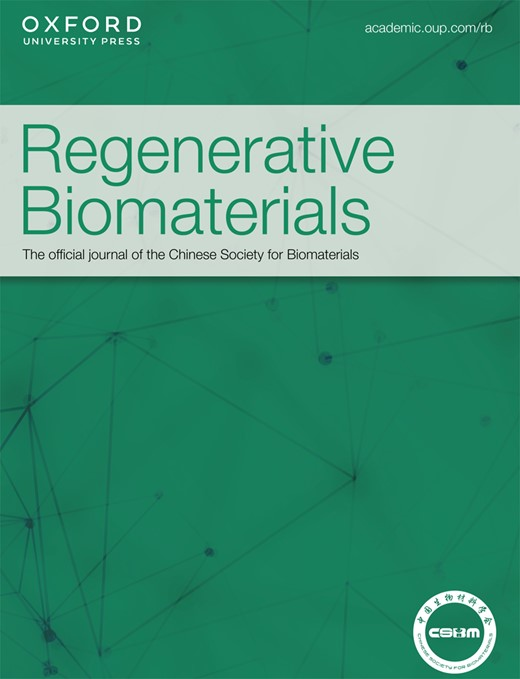表面脱矿冻干同种异体骨移植后再植失败的下颌牙种植体
IF 5.6
1区 医学
Q1 MATERIALS SCIENCE, BIOMATERIALS
引用次数: 0
摘要
用高扭矩移除失败的植入物会对周围组织造成严重损害,影响骨再生和随后在缺陷区域的骨整合。在此,我们报告一例载体螺钉骨折后立即取出植入物,植骨,并延迟再植入术。使用burb -钳技术将中心载体螺钉断裂的牙种植体取出。用颗粒状表面脱矿冻干同种异体骨移植物(SD-FDBA)填充三壁骨缺损。分别于术后1周、6个月和15个月进行锥形束计算机断层扫描,并进行标准化定量评价。术后15个月的牙槽骨宽度和高度约为原始值的91%,骨密度略低,采用灰度值比计算。移植部位重新开放,发现完全愈合,骨致密,血管化,并有一些残留的骨移植物。8个月后行再植和修复。SD-FDBA移植后再生骨的质量足以实现骨融合和长期种植成功。SD-FDBA优异的成骨性能归功于其人源性、皮质骨样结构、部分脱矿表面和含骨形态发生蛋白2的性质。需要进一步的研究,更多的病例和更长的随访时间来确认最终的临床效果。本文章由计算机程序翻译,如有差异,请以英文原文为准。
Surface demineralized freeze-dried bone allograft followed by reimplantation in a failed mandibular dental implant
The removal of a failed implant with high torque causes significant damage to the surrounding tissue, compromising bone regeneration and subsequent osseointegration in the defect area. Here, we report a case of carrier screw fracture followed by immediate implant removal, bone grafting, and delayed reimplantation. A dental implant with a fractured central carrier screw was removed using the bur-forceps technique. The resulting three-wall bone defect was filled with granular surface demineralized freeze-dried bone allograft (SD-FDBA). Cone-beam computerized tomography was performed at 1 week, 6 months, and 15 months postoperatively, and standardized for quantitative evaluation. The alveolar bone width and height at 15 months post-surgery were about 91% of the original values, with a slightly lower bone density, calculated using the gray value ratio. The graft site was reopened and was found to be completely healed with dense and vascularized bone along with some residual bone graft. Reimplantation followed by restoration was performed 8 months later. The quality of regenerated bone following SD-FDBA grafting was adequate for osseointegration and long-term implant success. The excellent osteogenic properties of SD-FDBA are attributed to its human origin, cortical bone like structure, partly demineralized surfaces, and bone morphogenetic protein-2 containing nature. Further investigation with more cases and longer follow-up was required to confirm the final clinical effect.
求助全文
通过发布文献求助,成功后即可免费获取论文全文。
去求助
来源期刊

Regenerative Biomaterials
Materials Science-Biomaterials
CiteScore
7.90
自引率
16.40%
发文量
92
审稿时长
10 weeks
期刊介绍:
Regenerative Biomaterials is an international, interdisciplinary, peer-reviewed journal publishing the latest advances in biomaterials and regenerative medicine. The journal provides a forum for the publication of original research papers, reviews, clinical case reports, and commentaries on the topics relevant to the development of advanced regenerative biomaterials concerning novel regenerative technologies and therapeutic approaches for the regeneration and repair of damaged tissues and organs. The interactions of biomaterials with cells and tissue, especially with stem cells, will be of particular focus.
 求助内容:
求助内容: 应助结果提醒方式:
应助结果提醒方式:


